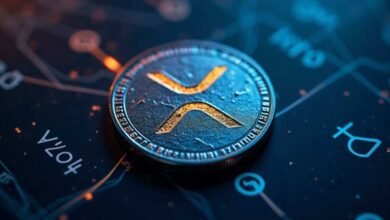
Despite these short-term price fluctuations, XRP continues to uphold its status as one of the leading
cryptocurrencies in the market. This resilience is largely driven by several key factors, including its strategic partnerships within the financial industry, ongoing technological advancements, and the resolution of its ongoing legal challenges.
1. Strong Partnerships in the Financial Sector
XRP’s ability to secure partnerships with major financial institutions has been a significant factor in its long-term value proposition. Ripple, the company behind XRP, has focused on integrating its blockchain technology into global payment systems. Its solutions are designed to enable fast, low-cost cross-border payments, a feature highly valued by banks and payment providers. Ripple has established connections with prominent financial institutions such as Santander, PNC, American Express, and Standard Chartered, among others. These partnerships are vital not only for the adoption of XRP but also for validating its use case as a legitimate alternative to traditional payment systems.
Each new partnership or integration has the potential to drive increased demand for XRP, as financial institutions look to leverage its fast transaction speed and low costs for international money transfers. As more banks and payment networks adopt Ripple’s solutions, XRP’s role in the global financial ecosystem continues to strengthen, which in turn boosts its value proposition.
2. Technological Advancements and Use Case Development
The continuous technological improvements made to the XRP Ledger (XRPL) also contribute to its sustained value. Ripple has been committed to enhancing the XRP network’s scalability, security, and transaction speed, ensuring that it remains a competitive option for large financial institutions.
One of the key technological advantages of XRP is its ability to process transactions in just 3-5 seconds, making it one of the fastest digital assets available. Additionally, XRP’s transaction fees are a fraction of a cent, making it an incredibly efficient choice for cross-border payments, especially when compared to traditional financial services or other cryptocurrencies like Bitcoin.
Ripple’s focus on upgrading the XRP Ledger for enhanced performance and greater scalability positions XRP as a robust and adaptable digital asset. The company has also worked to integrate XRP into decentralized finance (DeFi) and NFT markets, expanding its use cases beyond cross-border payments. These advancements help solidify XRP’s long-term relevance in a rapidly evolving market.
3. Ongoing Legal Developments
XRP’s price has also been heavily influenced by its ongoing legal battle with the U.S. Securities and Exchange Commission (SEC). The SEC filed a lawsuit in December 2020, alleging that Ripple Labs sold XRP as an unregistered security, a case that has had significant implications for XRP’s future. The outcome of this lawsuit is crucial for XRP’s legal standing and its potential for broader adoption in the U.S. and beyond.
Despite the uncertainty surrounding the case, many investors remain optimistic about XRP’s future. In the event of a favorable ruling for Ripple, XRP could experience a surge in price, as it would remove one of the largest legal obstacles facing the cryptocurrency. A positive outcome would also likely lead to increased institutional adoption, as financial firms often look for clarity in regulatory frameworks before fully integrating new technologies.
However, should the court rule against Ripple, XRP could face significant regulatory hurdles, including potential delisting from exchanges in the U.S. and a shift in how it is traded globally. Nonetheless, Ripple has shown resilience in navigating this legal challenge, and its ability to continue securing partnerships and developing its technology suggests that it can weather this storm, regardless of the eventual outcome.
4. The Bigger Picture: XRP’s Role in the Future of Finance
XRP’s positioning within the broader financial ecosystem remains strong, as it has increasingly been seen as a bridge between traditional finance and blockchain technology. Ripple’s solution offers a viable and scalable alternative to legacy systems like SWIFT, which has long been the dominant player in international payments. The high costs and slow processing times associated with traditional financial systems have created a market opportunity for blockchain-based solutions like Ripple’s, which aim to modernize the global financial infrastructure.
As more central banks explore central bank digital currencies (CBDCs) and blockchain technology becomes more widely accepted, XRP’s real-world use case as a bridge currency for cross-border payments could gain further traction. XRP’s low-cost and efficient nature make it an attractive option for integrating into these future financial ecosystems.
While XRP’s price may fluctuate in the short term due to external market forces or legal issues, its long-term viability remains supported by the growing adoption of blockchain technology in finance, Ripple’s innovations, and its institutional backing. XRP is well-positioned to continue its role as a leading digital asset, providing solutions to real-world financial challenges.
In conclusion, while XRP’s short-term price movements may reflect broader market trends or legal uncertainties, its long-term prospects are anchored in its foundational strengths—its role in the global financial industry, continuous technological enhancements, and the resolution of legal hurdles. These factors not only help XRP maintain its market position but also suggest that it could continue to grow as its adoption expands. The combination of these elements will likely keep XRP relevant in the evolving digital asset landscape.



